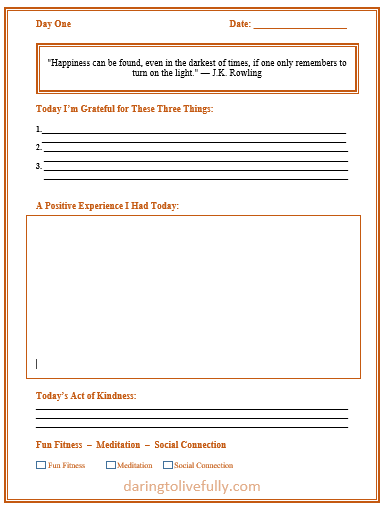
Imagine waking up every morning feeling happy and content.
 Harvard-trained positive psychologist Shawn Achor–author of the New York Times bestseller “The Happiness Advantage“–has made a career out of studying the science of happiness. His TED talk on happiness is one of the most popular of all time with over 13 million views. Achor argues that, as a society, our focus is on productivity, and we’ve ignored happiness and meaning. And we’ve done this to our detriment. After all, studies show that having a happy brain gives us a competitive advantage at work, and in life.
Harvard-trained positive psychologist Shawn Achor–author of the New York Times bestseller “The Happiness Advantage“–has made a career out of studying the science of happiness. His TED talk on happiness is one of the most popular of all time with over 13 million views. Achor argues that, as a society, our focus is on productivity, and we’ve ignored happiness and meaning. And we’ve done this to our detriment. After all, studies show that having a happy brain gives us a competitive advantage at work, and in life.
Here are some of these advantages:
- When the human brain is positive, intelligence rises. This is because we stop diverting resources to worry and to feeling anxious.
- Happiness triples our creativity.
- When we’re happy our productive energy rises by 31 percent.
- Being happy makes you more effective — happy workers make less errors than their unhappy counterparts.
Achor explains that the traditional formula of “I’ll strive to be successful so that I can be happy once I’ve achieved my goals” is wrong. Instead, you have to flip it around. Invest in becoming happy now, so that you can be successful in the future.
In order to help his students and clients apply the principles that he teaches, Achor set out to identify small, simple habits that can be done every day that will increase happiness levels. He uncovered six habits that can be done by anyone–regardless of age–in order to rewire their brain for happiness.
Below you’ll find Achor’s six happiness habits, as well as a method that I developed for making sure that you follow through on the six habits.
The Six Habits that Will Rewire Your Brain For Happiness
Here are the six habits that Achor came up with:
1. Gratitude List.
Every night, spend two minutes writing down three things you’re grateful for that occurred during the last 24 hours. It doesn’t have to be anything profound, but it does have to be specific. For instance, instead of being grateful for your child, be grateful for the big smile and sticky hug that your child gave you that morning.
Due to your brain’s innate negativity bias, you’re usually scanning the environment for threats. However, when your brain knows that it has to come up with three things to be grateful for each night, it will start to do the opposite. It will start scanning the environment for positives.
This brings your brain into better balance. It also retrains your brain so that it will start seeing more possibilities.
Keep in mind that you shouldn’t write down the same three things every night. You want to get your brain to scan the world and notice new things to be happy about. Therefore, make it a rule not to repeat something you’ve already written about.
2. The Doubler.
Take one positive experience from the past 24 hours and spend two minutes writing about the experience. Aim to write down at least four details about the experience.
This is helpful because when you take a moment to remember a positive experience, your brain labels it as meaningful, which deepens the imprint. In addition, it allows you to relive the positive experience–along with the positive feelings that came with it (hence the name, the doubler).
3. The Fun Fifteen.
The effects of daily cardio can be as effective as taking an antidepressant. Hence, one of the six happiness habits is to engage in 15 minutes of a fun cardio activity every day. This includes activities such as gardening, rebounding on a mini-trampoline, and briskly walking your dog.
Achor adds that your brain records exercise as a victory, and this feeling of accomplishment transfers to other tasks throughout the day. It also teaches your brain to believe, “My behavior matters”, which also enhances happiness.
4. Meditation.
Every day take two minutes to stop whatever you’re doing and concentrate on your breathing. Just focus on your breath moving in and out. Even a short mindful break can lower stress and result in a calmer, happier you.
When Achor got Google employees to stop what they were doing for two minutes a day and just focus on their breath, here’s what happened 21 days later:
- Their accuracy rates improved by 10%;
- Their levels of happiness rose; and
- Their engagement scores rose significantly.
Meditation will rewire your brain and allow it to work more optimistically and successfully.
5. Conscious Act of Kindness.
Being kind to others feels good, and carrying out an act of kindness each day is a great happiness booster.
Achor recommends that at the start of every day you send a short email or text praising someone you know. An added bonus is that it’s very likely that the other person will respond with an appreciate comment about you.
Nonetheless, your act of kindness can be anything:
- Hold the elevator door open for someone.
- When you go on a coffee run ask a co-worker if you can get a coffee for him as well.
- Let someone who seems to be in a hurry cut ahead of you in line.
Even something small and simple like giving someone a smile works.
6. Deepen Social Connections.
Our social connections affect our success and health, and even our life expectancy. In addition, having a feeling of social support is vital for happiness. In fact, Achor’s studies show that social connection is the greatest predictor of happiness.
Have some contact with family and friends each day, even if it’s just calling them to chat for two or three minutes, or texting them to meet up for brunch on Sunday.
The Happiness Journal (Free)
Achor explains that if you follow the six habits explained above daily, for 21 days, you’ll be transformed from a pessimist to an optimist. In addition, within 30 days, following these habits will change the neuropathways of your brain and turn you into a lifelong optimist. That’s quite an assertion.
Let’s try it and see if it works, shall we? How? By filling out the Happiness Journal that I’ve created based on Achor’s six habits. I’m going to share it with you, because I’m just that awesome. The journal will allow you to record your practice of the six happiness habits for thirty days.
Here’s what the journal contains:
- A cover page.
- An instructions page — basically, what you already read above.
- Thirty journal pages — write down the date at the top of each page and read the happiness quote for the day. Then, write down three things you’re grateful for, a positive experience for the day, and your act of kindess for the day. At the bottom of the page there’s space for you to check off if you exercised, meditated, and connected with someone.
Here’s what each journal page looks like:

You can download the Happiness Journal, for free, here. And if you’re not currently subscribed to Daring to Live Fully, you can subscribe by clicking here.
Conclusion
Go ahead and rate your current happiness level on a scale from 1 to 10. Then, download the Happiness Journal, print it out, and spend the next 30 days filling it out. At the end of that time, rate your happiness level again.
Did your happiness level go up? If all the scientific data collected by Achor is correct, your answer will a resounding “Yes!”.
Live your best life by adopting the six happiness habits explained above.





Related Posts:
- 13 Quick Ways to Improve Your Mood
- Three Effective Methods For Making Better Decisions
- 10 Things to Do When life Throws You a Curveball
- 21 Ways to Create and Maintain a Positive Attitude
Did you enjoy this article? Subscribe to “Daring to Live Fully” by clicking here and get free updates.




 Marelisa Fabrega is a lawyer and entrepreneur. She holds a Bachelor of Science in Business Administration from Georgetown University in Washington, D.C., as well as a Juris Doctor from the Georgetown University Law Center. You can learn more about her
Marelisa Fabrega is a lawyer and entrepreneur. She holds a Bachelor of Science in Business Administration from Georgetown University in Washington, D.C., as well as a Juris Doctor from the Georgetown University Law Center. You can learn more about her 





